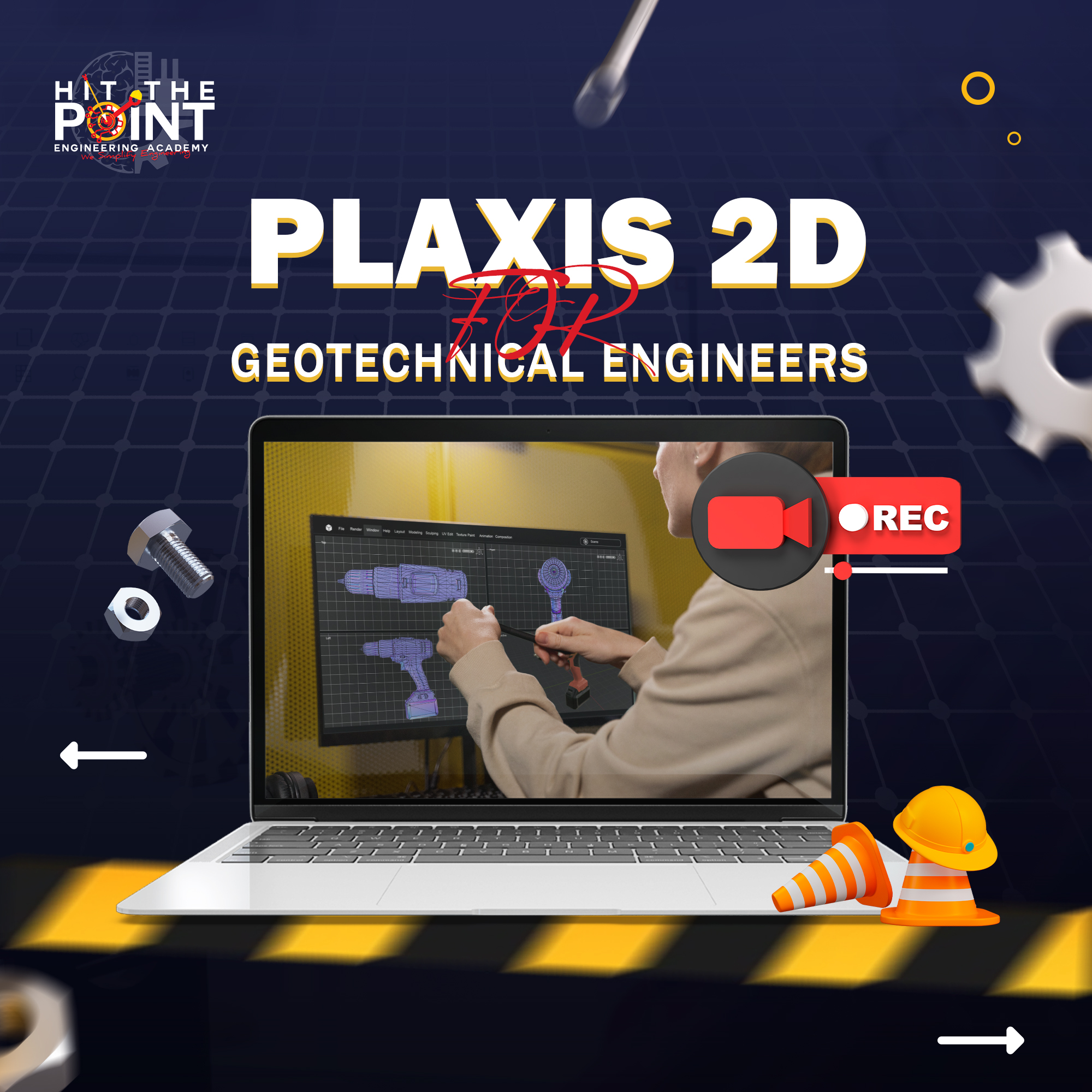PLAXIS 2D for Geotechnical Engineers recorded

Description
Benefits of attending this Workshop:
-
Learn modeling skills in structural and geotechnical design using PLAXIS.
-
Know the concept of every task you do.
-
Improving the skills of using PLAXIS
-
Saving time and effort to do modeling tasks.
-
Be qualified to start your career as a geotechnical engineer or freelancer.
Who should attend this workshop
-
Site and office engineers who aim to improve their skills to enhance their careers as geotechnical engineers.
-
Students who aim to improve their knowledge to start their careers as geotechnical engineers.
Workshop Prerequisites
-
Just basic knowledge of geotechnical engineering from college.
Workshop Strategy
-
Providing detailed elaboration of the concept.
-
Providing live practical implementation of the elaborated concepts.
-
Providing tips and tricks of PLAXIS during the sessions.
-
Providing assignments in each session and final project in the final session to be done by the course attendees to ensure their understanding and their practical implementation ability.
